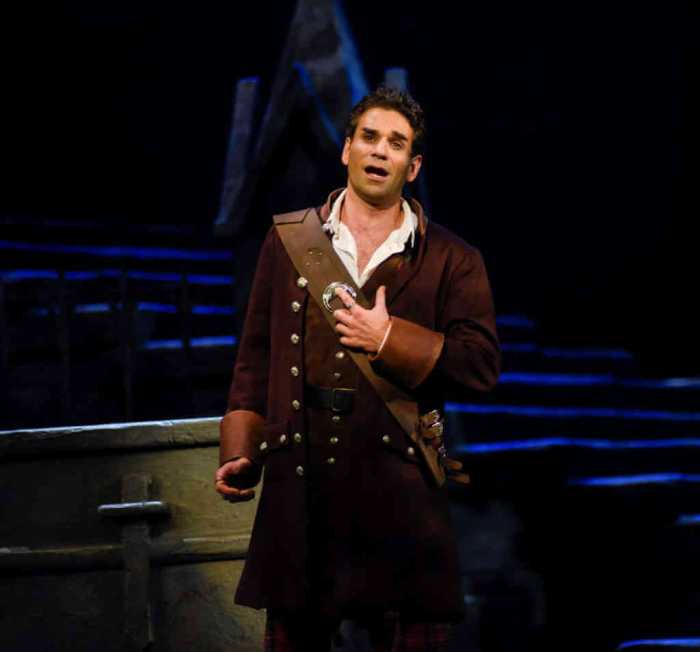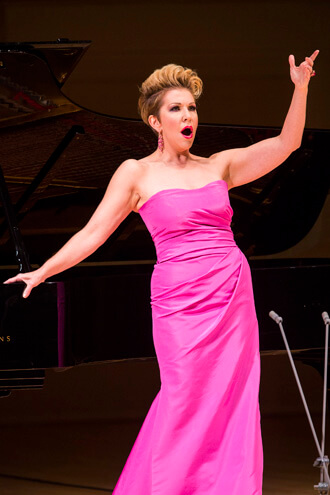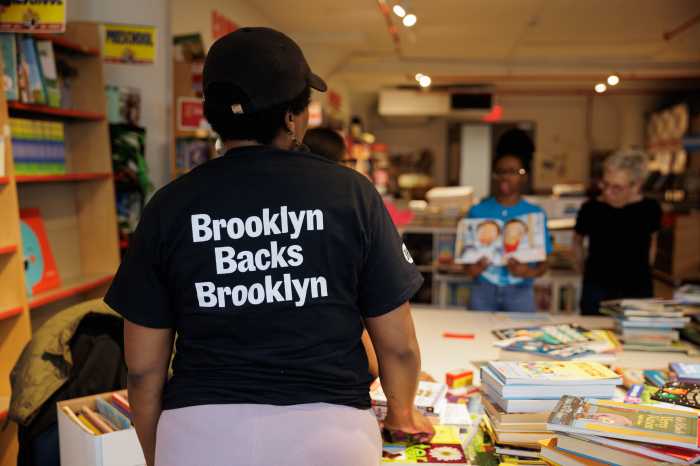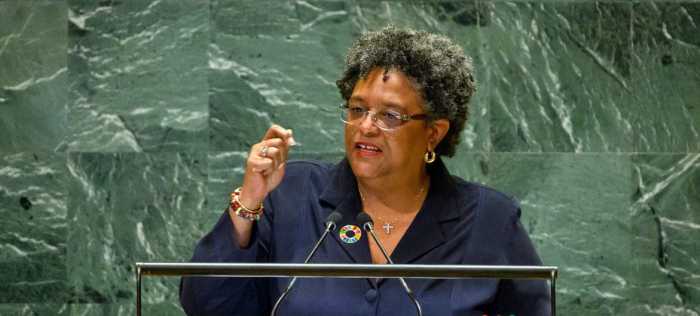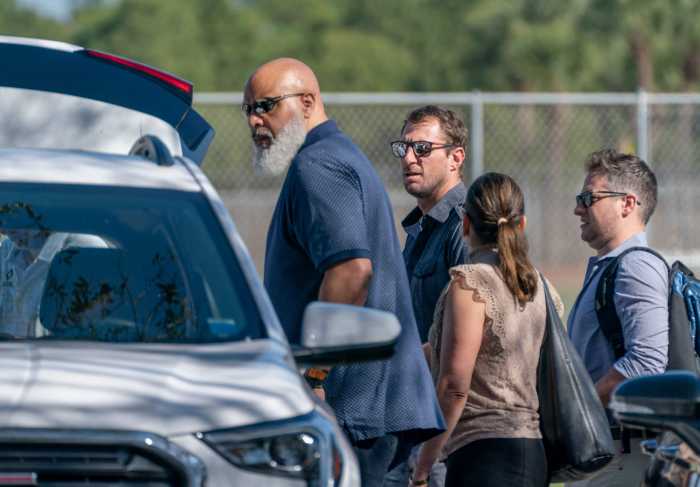Juilliard Opera Theater, on November 16, mounted Benjamin Britten’s “The Turn of the Screw.” Any musically strong performance of this masterful score compels awe — and gratitude. Steven Osgood really had the measure of his excellent band and paced and blended them accordingly. With a dynamically versatile chamber piece like this, the intimate but not cramped auditorium reaffirms its status as one of the city’s very best places to hear operas. When he took his bow, Osgood generously and justly invited his players up onstage with him and the singers.
If there is a better English-language opera written after 1950, I haven’t heard it (and I include Britten’s also wonderful “Billy Budd” and “A Midsummer Night’s Dream”). Librettist Myfanwy Piper transformed Henry James’ short story into something equally brilliant but differently ambiguous. Here, the two malevolent molesting ghosts, Peter Quint and Miss Jessel, whom the Governess perceives as “coming for” her charges Miles and Flora definitely seem to exist. There’s a quicksilver seam of queer desire flowing through the whole; Virgil Thomson liked to call it “The Screw of the Century.”
The opera received three very different productions over the decades from New York City Opera. I didn’t love John Giampietro’s, though it had some elegant concision in flow of movement and several strong dramatic moments. Alexis Distler’s set was a Jonathan Miller’s crumbling-walled Met “Nozze” and Glimmerglass “Traviata,” with only the faintest trace of any sense of a park or a lake in the projections.
Britten’s life partner (and muse in melismatic writing) Peter Pears created both tenor parts, the Prologue and Quint. I’d only once ever seen them divided, in a 1990 English National Opera performance in Leningrad. Here Giampietro had Chance Jonas-O’Toole sing the Prologue — clearly but somewhat drily on the bottom — dressed as if Dr. Sugar in “Suddenly Last Summer,” in a white lab coat. He seemed to be testing the Governess (attractive, luminous-voiced Anneliese Klenetsky, with a fresh, unspoilt soprano) and rarely left the stage for long, acting as chief scenery and prop man. This was part of a general post-Ponnelle tactic of having unscripted listeners-in in nearly every scene, even where to do so reduced the tension and made little logical sense. And Piper’s quote about the drowned “ceremony of innocence” from Yeats’ “The Second Coming” is surely resonant enough without having it declaimed as Act Two begins.
Canadian tenor Charles Sy sang an absolutely exceptional Quint. With time he can work even more nuance into the very complicated text, but the vocalism was flawless and very promising indeed. Fine mezzo Katerina Burton sang with richness and feeling but bore the burden of youth as the old housekeeper Mrs. Grose — though the late lamented Janis Martin sang the NYCO premiere at age 23! Rebecca Pedersen showed a mettlesome, penetrating voice as Miss Jessel, a very tough sing in terms of tessitura. Joan Hofmeyr did well in the tough-to-shine part of Flora. Reading that soprano Britt Hewitt was cast in the key treble role of Miles, I feared a cost to Britten’s sound world, but Hewitt did a remarkable job fending off telltale vibrato, sounding clean and boyish but never faltering — as do many boy singers — in projection. A worthwhile gamble, it turned out.
The Philadelphia Orchestra’s guest stint at Carnegie Hall November 13 contained one operatic selection and one vocal selection. Music director Yannick Nezet-Seguin, whom the Philadelphians, as of this season, share with the Metropolitan Opera, began the program with a shimmering, dynamic, well-judged account of the wonderful first act Prelude to “Lohengrin” In the last two years, the refreshingly out gay conductor has scored strongly at the Met with both “Der fliegende Hollaender” and “Parsifal” — the first and last of Richard Wagner’s canonical operas, very different in nature and neither a conductorial walk in the park. The Met audience last heard “Lohengrin” — once one of any opera house’s most surefire draws, even in Italy — in May 2006. A new production is rumored for 2022-23 under Nezet-Seguin: let’s hope it comes to fruition, whether or not Anna Netrebko sings Elsa. Maybe by then she’ll be flaunting her dramatic chops as Elsa’s nemesis, Ortrud?
After intermission, we heard Ernest Chausson’s Wagner-inflected — to put it mildly — “Poeme de l’amour et de la mer,” completed in 1892. The melancholy song cycle was premiered by a tenor, with the composer at the piano. Within the year he orchestrated it, and a soprano sang the initial performance. As it happens, Carnegie first heard it exactly 100 years ago last month in a performance by none other than the self-same Philadelphia Orchestra, with Margaret Matzenauer, a powerful Verdi/ Wagner mezzo who occasionally sang soprano roles like Isolde and Bruennhilde and, in fact, holds the second place (43 to Ernestine Schumann-Heink’s 66) for Met performances of Ortrud.
Joyce DiDonato is a no less versatile but very different type of singer, with a totally personal timbre and lyrical yet intense style of interaction with both words and music that have endeared her to an international public. The range of the Chausson piece suited DiDonato’s instrument well, and she and Nezet-Seguin’s orchestra were in sync. She could turn reedy on topmost notes, but turned that to expressive effect. Her emotional connection with the material — particularly the work’s heartbreaking final section “Le temps des lilas” — proved highly moving; the audience waited several seconds before afffording mezzo, conductor, and players a huge ovation.
On October 23, as part of Carnegie’s “Great Voices” series, a song recital by Elina Garanca proved the beautiful Latvian mezzo-soprano a great vocalist — and suggested she is not an exceptional recitalist. Her singing, with its steady sheen and ease from top to bottom, was a consistent aural pleasure, and nothing she did was unmusical. She was not singing bonbons: it was a “serious” and appealing program, with groups — or cycles, not that the audience forbore from applauding every single song — by Schumann, Wagner, Ravel, de Falla. But Garanca as yet lacks the identification with the sung words — the ability to enter into each poetic persona “speaking” through the texts — that sets apart the true recitalist.
Part of the difficulty here may have been the absence of Garanca’s usual accompanist, the superb Malcolm Martineau, due to a family death. Kevin Murphy, who stepped in on shortish notice, is a capable professional, but the musicians did not always seem on the same page as to phrasing and timing. Murphy sounded most eloquent in the preludes and postludes in which no voice appeared.
A further hindrance was the mezzo’s use of a music stand, which seems increasingly a “thing” even in top-level gigs like this one. When I first started attending song recitals decades ago, no one would have dreamed of using a music stand, unless perhaps they were creating a difficult piece with assisting chamber players. What has changed in the culture and the industry? Garanca is creditably idiomatic in German (less so in French, generalized in Spanish) but even there, her use of the music stand built a wall between her and her listeners. There wasn’t doubt that she knew what she was singing — but she rarely communicated it.
To steady ovations, the artists granted tree encores: a Grieg-like Latvian song, Carmen’s Habanera, and Dalila’s seductive “Mon coeur s’ouvre a ta voix.” With the music stand no longer an impediment, Garanca finally sang out with expressiveness and freedom.
David Shengold (shengold@yahoo.com) writes about opera for many venues.


